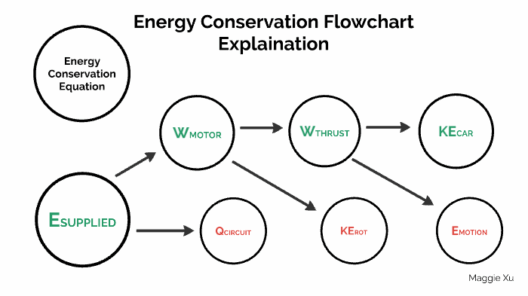In the realm of classical mechanics, the distinctions between elastic and inelastic collisions are paramount for understanding energy transformations during collisions between objects. When two bodies collide, the behavior of kinetic energy and potential energy during the interaction varies significantly based on the nature of the collision. This discussion will delve into the fundamental principles governing elastic and inelastic collisions, elucidating their implications on potential energy.
Understanding Collisions
Collisions can be broadly categorized into two types: elastic and inelastic. An elastic collision is defined by the conservation of both momentum and kinetic energy, whereas an inelastic collision conserves momentum, but kinetic energy is not conserved. The nuances inherent in these definitions set the stage for comprehending potential energy behavior.
In an elastic collision, the energy before and after the impact remains unchanged. This phenomenon occurs due to the lack of permanent deformation or generation of heat. The objects essentially ‘bounce’ off one another, retaining their kinetic energy. A prime example can be observed in the collision of molecular gas particles, where they rebound elastically, maintaining their energy levels post-collision.
On the other hand, in an inelastic collision, as seen in car crashes or sports interactions, kinetic energy is dissipated through heat, sound, or deformation of the colliding bodies. The defining characteristic here is the transformation of some kinetic energy into other forms of energy, such as potential energy, leading to a complex interplay during the collision process.
The Role of Potential Energy
Potential energy plays a critical role in understanding the consequences of both types of collisions. It is the stored energy held within an object due to its position relative to other objects, internal stresses, electric charge, and other factors. In the context of collisions, potential energy emerges prominently when examining scenarios involving elastic and inelastic behaviors.
During elastic collisions, potential energy has minor implications since the total mechanical energy (the sum of potential and kinetic energy) remains constant. The transformations of energy are nearly instantaneous and reversible, akin to a perfectly elastic band capable of returning to its initial state upon release. Potential energy before impact can convert into kinetic energy during the collision and vice versa, but the overall energy remains unchanged.
Conversely, in an inelastic collision, potential energy’s role is magnified. Here, the interaction typically results in an irreversible transformation of kinetic energy into potential energy. This can occur through deformation, where the colliding bodies produce dents or changes in shape. In such cases, the deformation may store energy as potential energy within the materials’ altered structure. A rubber ball hitting a hard surface exemplifies this, as it compresses upon collision, storing potential energy in its distortion, which is then released as kinetic energy as it rebounds.
Quantitative Analysis
A quantitative analysis of these collision types reveals significant insights into energy states. For elastic collisions, the equations governing momentum and kinetic energy are elegantly simplified. Let ( m_1 ) and ( m_2 ) denote the masses of the colliding bodies, while ( v_1 ) and ( v_2 ) represent their velocities before the collision. The conservation laws can be expressed as:
- Momentum: ( m_1v_{1i} + m_2v_{2i} = m_1v_{1f} + m_2v_{2f} )
- Kinetic Energy: ( frac{1}{2} m_1v_{1i}^2 + frac{1}{2} m_2v_{2i}^2 = frac{1}{2} m_1v_{1f}^2 + frac{1}{2} m_2v_{2f}^2 )
In contrast, for inelastic collisions, while momentum is conserved, kinetic energy is not, leading to a more complex scenario where some energy is lost to other forms. The fundamental equation remains:
- Momentum: ( m_1v_{1i} + m_2v_{2i} = m_1v_{1f} + m_2v_{2f} )
However, accounting for the lost kinetic energy often requires understanding the specific processes at play, such as energy transformed into heat or potential energy in deformed structures. In a perfectly inelastic collision, both bodies stick together post-impact, resulting in maximum kinetic energy loss.
Energy Transitions and Real-World Applications
Understanding elastic and inelastic collisions has profound implications in various fields, from automotive safety to molecular physics. The principles guide the design of safer vehicles, accounting for how kinetic energy dissipates during collisions, enhancing structural integrity to minimize injury. Similarly, in sports, knowledge about energy conservation enhances performance and safety in training environments.
In conclusion, the dynamics of collisions—both elastic and inelastic—reveal fascinating insights into energy transformation, particularly the interaction between kinetic and potential energy. These principles are not merely theoretical; they underpin practical applications that resonate through scientific inquiry and technological advancement. The conversations around potential energy in markets, engineering, and even environmental science showcase the importance of understanding these fundamental mechanics. By comprehensively grasping how energy operates during collisions, society can innovate for better safety and efficiency in human activities.






